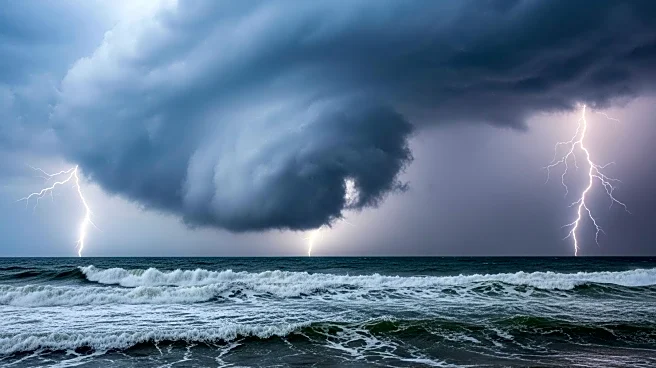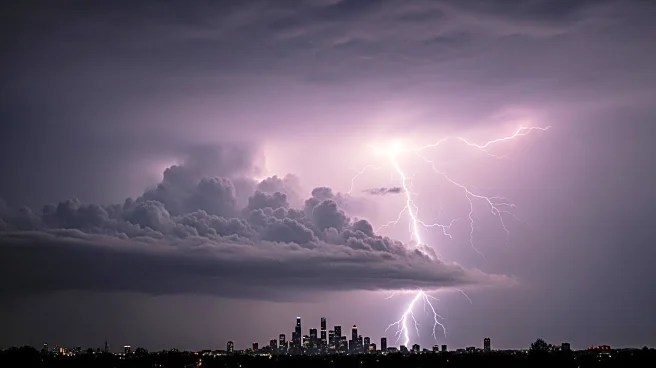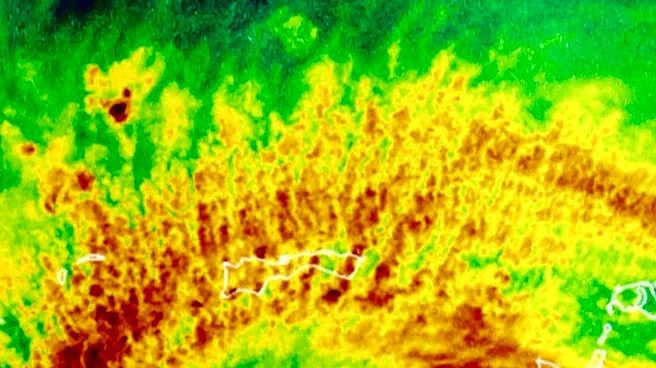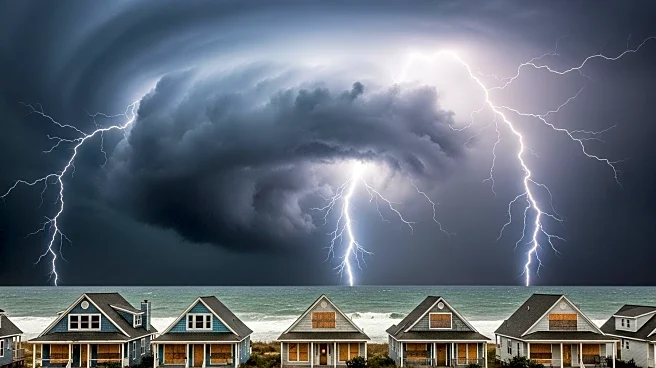What's Happening?
Super Typhoon Ragasa, the strongest storm of the year, has hit the northern Philippines with Category 5 hurricane-force winds, leading to mass evacuations and school closures. The storm made landfall over Panuitan Island in the northern Cagayan province, generating sustained winds of over 267 kph (165 mph). Tens of millions of people are at risk as the storm is expected to move westward, passing south of Taiwan and heading towards Hong Kong and Guangdong Province in southern China. The typhoon's outer bands are causing torrential rain and destructive wind gusts, with potential flooding and landslides in northern Luzon. Hong Kong and Macao are preparing for potential flooding, landslides, and fallen trees, with schools closed and flights canceled.
Why It's Important?
The impact of Super Typhoon Ragasa is significant due to its potential to cause widespread damage across densely populated regions. The storm's trajectory threatens major urban centers like Hong Kong and Macau, which are crucial financial hubs. The typhoon's destructive power could disrupt economic activities, lead to infrastructure damage, and necessitate large-scale evacuations. The Philippines, already vulnerable to frequent typhoons, faces heightened risks due to climate change, which has made storms more unpredictable and extreme. The storm's impact on agriculture, housing, and public safety could be severe, affecting millions of lives and necessitating substantial recovery efforts.
What's Next?
As Super Typhoon Ragasa continues its path, authorities in Hong Kong, Taiwan, and southern China are implementing safeguarding measures, including evacuations and transport suspensions. In China, officials are preparing to relocate 400,000 people from low-lying areas. Taiwan has issued warnings and suspended ferry services. Hong Kong is bracing for the storm's arrival with emergency measures, including school closures and flight cancellations. The financial hub is on high alert, with emergency crews on standby. The storm's progression will be closely monitored, with potential for further intensification and impact on additional regions.
Beyond the Headlines
The occurrence of Super Typhoon Ragasa highlights the increasing frequency and intensity of tropical storms in the western Pacific, exacerbated by climate change. The rapid intensification of such storms poses challenges for disaster preparedness and response, particularly in vulnerable regions. The storm's impact underscores the need for enhanced climate resilience and adaptation strategies to mitigate future risks. The human-caused climate crisis is contributing to more extreme weather events, necessitating global efforts to address environmental sustainability and reduce carbon emissions.












